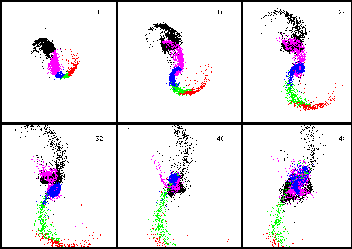
Motivated by recent neutral hydrogen observations with the VLA, we have undertaken an investigation into the interaction that produced the well known merger remnant NGC 7252. Through fully self-consistent N-body simulations, we are able to reproduce the kinematic character of the HI observations quite well, including the velocity reversals observed along each tidal tail. In the simulation these reversals arise from particles which have turned around in their orbit and are moving to smaller radii. The bases of the tails fall back quickly to small pericentric distances, while the more distant regions fall back more slowly to ever increasing pericentric distances. The delayed return of tidally ejected material may extend over many Gyr. The evolution of this merger is followed numerically for 800 \h Myr beyond the best fit time. We find that nearly half of the present tail material, or of order 1E9 Mo of neutral hydrogen and 2E9 Lo of starlight, will return to within 13 kpc of the nucleus within this time span. While the collisionless stars of the tails will continue orbiting between their inner and outer turning points, the observations show the HI gas of the tails disappearing upon its return. We discuss this result in light of the lack of central HI in the main body of this merger remnant.
Maintained by jhibbard @ nrao.edu Last modified: Tue Apr 30 16:02:18 EDT 2002